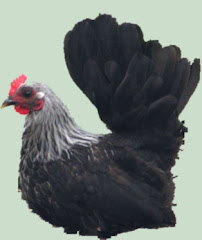With all the bad press about Japanese beetles, it's often easy to assume that we're in an all-new pest high. New varieties, growing numbers - Orem, Utah spraying the entire community (!) with pesticides that will prevent gardeners "from harvesting vegetables or fruit from their gardens for the next three years." (!!!) (http://ag.utah.gov/plantind/JB-MayorLetter.pdf)
According to the mayor, this is necessary so that the beetles do not destroy agriculture in the state of Utah. He also implies that this, along with the heavy spraying, will eradicate the Japanese beetle.
So it's in this context that I'm reading Jeffrey Lockwood's book, Locust: The Devastating Rise and Mysterious Disappearance of the Insect that Shapes the American Frontier.
After reading about the ravages of the locusts, which weren't confined to the American frontier at all, but in the Middle East and Europe and parts of Africa, I feel confident in saying that we really should be more appreciative of our pest problems. The Rocky Mountain locust (Melanoplus spretus) formed tremendous swarms - in one recorded case, at least 110 miles across - that decimated everything in their path, eating not just plants but dead animals and inanimate objects (tool handles, for instance, and the clothes of the farmers who tried to kill them). They left between 100 and 150 eggs per square inch of land, consequently hatching millions upon millions of offspring. And the hotter and drier the weather, the more likely they were to devastate the land.
Reports from Salt Lake indicated that the insects would drown in the lake and then wash ashore, forming 6-foot walls of rotting insects around the lake.
So I have a suggestion for Orem: how about holding a Japanese beetle appreciation day, to acknowledge that, as voracious and invasive as the beetles are, things could always be much, much worse?
Monday, February 11, 2008
Subscribe to:
Post Comments (Atom)

No comments:
Post a Comment